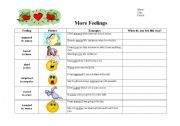
|
More Feelings
This worksheet helps students learn the feelings of scared, worried, surprised, annoyed, bored, and tired.
Level: elementary
Age: 12-17
Type: worksheet
Downloads: 6
|
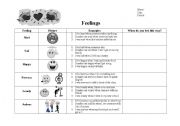
|
Feelings worksheet
This worksheet helps students understand and practice the feelings mad, sad, happy, lonely, nervous and jealous.
Level: elementary
Age: 12-17
Type: worksheet
Downloads: 9
|
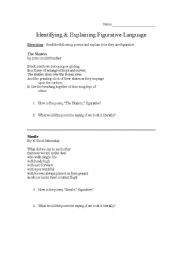
|
Teaching Figurative and Literal Language
These are three worksheets that I use to teach students how to differentiate between literal and figurative language. One of the worksheets asks the students to create visual cues to show an understanding. The other two worksheets use poetry to show the difference between literal and figurative language.
Level: advanced
Age: 13-17
Type: worksheet
Downloads: 9
|
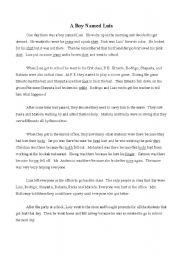
|
Short Story: Clothes and Body Parts
I wrote this to help students practice clothes and body parts while also working on their reading comprehension. I would recommend changing the students names so they reflect your students.
Level: elementary
Age: 10-17
Type: reading
Downloads: 8
|

|
Short Story: Clothes and Body Parts
I wrote this to help students practice clothes and body parts while also working on their reading comprehension. I would recommend changing the students names so they reflect your students.
Level: elementary
Age: 10-17
Type: reading
Downloads: 6
|
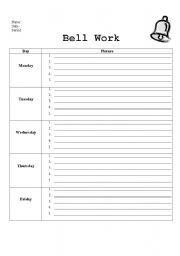
|
Bell Work
This worksheet is great to use at the start of class. I have a picture projected in the front of the room, and each student must write 5 sentences about the picture (or for lower students, they just write words). It is a great conversation starter and gets the students generating authentic language.
Level: elementary
Age: 8-17
Type: worksheet
Downloads: 1
|
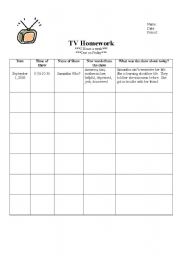
|
TV Log
This TV log is helpful to get students to work on listening skills outside of the classroom. Not only does it get student practicing their English, but it also gets them more exposure to an English-speaking culture. If you are working with students that do not get English channels, you can ask them to watch movies instead.
Level: intermediate
Age: 12-17
Type: worksheet
Downloads: 4
|
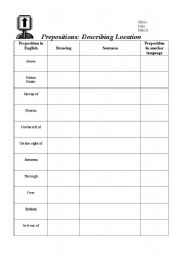
|
Prepositions: Describing Location
This worksheet can be used as an introduction to vocabulary that is necessary for giving directions. It is helpful because it asks students to process the information in 3 different ways (picture, verbal, and native language).
Level: elementary
Age: 8-17
Type: worksheet
Downloads: 6
|
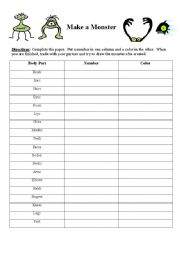
|
Make a Monster: Body Parts and Colors
The students use this worksheet to practice body part vocabulary. After completing the worksheet, they trade with a partner and then attempt to draw the monster that their partner created. This activity is a great way to introduce and/or review body vocabulary because they have to interact with the vocabulary multiple times. Of course, the best ...
Level: elementary
Age: 8-17
Type: activity-card
Downloads: 14
|